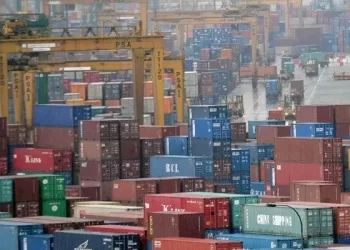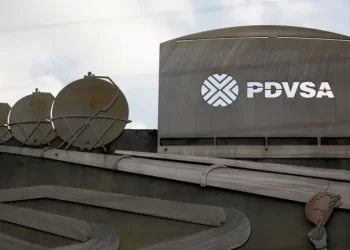KIBBUTZ NIR OZ, Israel (news agencies) — A new kind of tourism has emerged in Israel in the months since Hamas’ Oct. 7 attack. For celebrities, politicians, influencers and others, no trip is complete without a somber visit to the devastated south that absorbed the brunt of the assault near the border with Gaza.
Jerry Seinfeld, Elon Musk, Michael Douglas, former presidential candidate Nikki Haley, and Ivanka Trump and Jared Kushner are a few who have visited, at times posing for photos in front of burned-out homes. Many Israelis, including soldiers and security officials, are also visiting on organized trips.
“It’s our personal story, but it’s also the story of all of the state of Israel,” said Irit Lahav, spokeswoman for Kibbutz Nir Oz, who gives many of the tours.
A quarter of the approximately 400 Nir Oz residents fell victim to the attack. Hamas militants killed more than 20 and kidnapped over 80. In the dining hall, a wall of post office boxes is plastered with stickers — red for killed, black for kidnapped, blue for released.
While it’s uncomfortable to open the community to visitors, she said it’s important for people to “come here and smell the burned smell of death, to imagine your friends or parents here.”
Hamas militants killed around 1,200 people as they rampaged through southern Israel, and kidnapped around 250. Health officials in Hamas-run Gaza say more than 37,000 Palestinians have been killed in the war that followed.
Prior to Oct. 7, Lahav ran a tourism company. Now she has turned those itinerary-building skills to the kibbutz where she grew up. Her tour includes the spot in the fence where Hamas militants stormed the kibbutz, along with small details that humanize the scale of destruction, like the candy eggs that melted when the general store was torched.
Many of the kibbutzim and towns that experienced the worst destruction are closed to the public, accessible only via organized tours like those for dignitaries or celebrities, or by invitation from a resident.
Nir Oz decided that the guides must be residents. Rena Bazar, who lives with most of the community in temporary housing elsewhere, is among those giving tours.
At first, it was difficult to return to Nir Oz. She didn’t like the idea of strangers on the lawns and in the dining hall with its bullet-riddled windows. But eventually, she understood the importance of helping visitors understand not just what happened, but also what life had been like before Oct. 7.
“I want to make it less about the combat and more about the personal stories of people who were there,” Bazar said.
For visiting dignitaries and VIPs, trips to Israel have long included stops at famous religious or cultural sites, such as the Western Wall, Masada, the Sea of Galilee or the Church of the Holy Sepulcher, and the national Holocaust memorial, Yad Vashem. The visits to the battered kibbutzim and border towns are the latest way to build support and solidarity with Israel’s allies abroad.
Other parts of southern Israel are open to the public and encouraging visitors — both foreigners and Israelis from elsewhere.
The city of Sderot runs “resilience tours,” connecting groups with survivors who share their memories of Oct. 7 or highlight cultural or culinary offerings. In contrast to the hardest-hit kibbutzim like Nir Oz, most of Sderot’s residents have returned.
Hen Cohen, the city’s tourism director, estimated that about 200,000 visitors have come during the first half of 2024, compared with 100,000 total in a normal year. Most come via solidarity missions from abroad or are local visitors such as soldiers and police officers on educational tours.
Birthright Israel, an organization that provides 10-day free trips to Israel for Jewish Americans, said that nearly all of the 13,500 participants expected this summer will visit Sderot and the site of the Nova music festival, where at least 364 people died. These visits provide an economic and morale boost to residents, Cohen said.
The Sderot police station, where 10 officers were killed on Oct. 7 in a standoff that left the station in ruins, is a main attraction. Visitors stop at the local museum, and watch security footage of what happened on Oct. 7, then walk to the empty lot where the police station stood. Twisted metal remains. Israeli flags flutter in the wind. A sign says a memorial will be built there.
“In this dark hour, I wanted to do my part to make sure the people of Israel know that the people of the United States are with you,” former U.S. Vice President Mike Pence said while visiting the site. Seinfeld later cried while talking about his own visit to a kibbutz, describing it as “the most powerful experience” of his life.
Zehava Ben Zaken, a lifelong Sderot resident, said it has taken time to adjust to seeing visitors every time she walks by. “I’m happy they come to see this place, so they can understand and stand with us,” she said.
Hearing the booms from Gaza a few kilometers (miles) away, she hoped that visitors can finally understand Sderot’s precarious security situation. “We’re totally broken,” she said.









